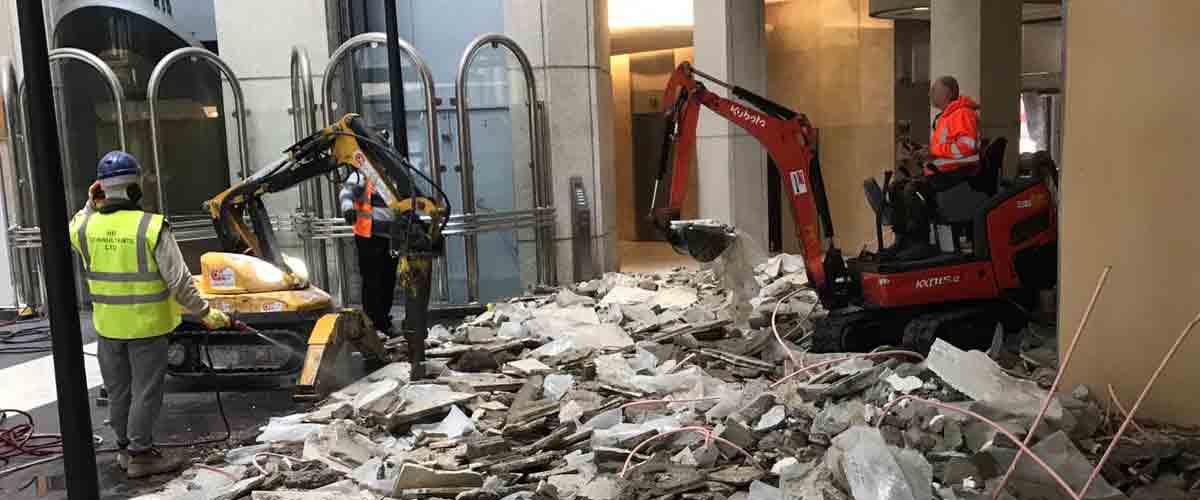

Hydraulic Bursting - An Efficient Controlled Demolition Technique
Executing demolition projects is a big challenge for demolition experts because they pose tremendous threats to their lives. Apart from that, the vibration that stems from demolition can also affect the integrity of the building or structure in question. And to address these issues, demolition contractors are now using controlled demolition techniques like hydraulic bursting.
Yes, when compared to traditional demolition methods, hydraulic bursting is the safest way to bring down concrete and masonry structures. If you are looking forward to demolishing reinforced concrete structures such as columns, beams, and roof trusses, hydraulic bursting is an ideal technique to accomplish your project in the safest way possible.
Here Is a Brief Description Of The Process Of Demolishing Concrete Structure Using Hydraulic Bursting.
When it comes to bringing down massive concrete structures, hydraulic bursting experts focus on drilling small holes on the concrete surface in the first place. They use quality diamond drill bits to create the holes.
After that, they insert hydraulic bursters into these holes and expand them carefully to produce cracks on concrete in a controlled manner. Since this technique puts enormous pressure on the material, it eventually ends up breaking into small chunks.
Where Can You Use It?
You can use it to bring down concrete and masonry structures of any thickness. Since it’s a highly safe, powerful, and efficient technique, you can use it to demolish, bridges, dams, walls, beams, pillars, foundations, and floors, etc.
Benefits of Hydraulic Bursting
Ideal For Confined Spaces
One of the most significant benefits of using hydraulic bursting is that it can help you get the desired outcome even in the confined spaces. Since the equipment used in this process are quite compact, you can operate them smoothly in space-constrained sites.
Noise-Free
Traditional demolition techniques produce tremendous noise while demolishing walls, beams, columns, and floors, which not only create enormous health problems for the workers on the site but also for neighbors. Exposure to high-level of noise can cause hearing impairments and hypertension among demolition workers. So, as a building owner, you should always try to stick to a technique like hydraulic bursting to avoid causing disturbance to your neighbors.
Similarly, as a demolition contractor if you want to promote the health of your workers, make sure that you stick to hydraulic bursting.
Dust-Free
Apart from producing noise, the execution of residential, commercial, and industrial projects also generate a significant amount of dust, which leads to health issues like infections, asthma, chronic obstructive pulmonary disease (COPD), asphyxiation, and rhinitis, etc. Apart from that, inhalation of dust can also cause cancer.
However, if you use hydraulic bursting to execute a demolition project, you don’t have to be bothered about suffering from any of these problems because it’s a dust-free technique.
Improved Efficiency
Since hydraulic bursting is the noise and dust-free controlled demolition technique, workers on the demolition site do not have to struggle with any problem, which eventually enhances their productivity. The reason hydraulic bursting minimizes the production of dust and noise is that it doesn’t demolish the structure at once, it produces cracks on it, which helps in dividing it into small chunks of concrete.
After that, demolition experts use their experience and advanced equipment to remove those small chunks of concrete carefully.
Non-Percussive
One of the most significant advantages of hydraulic bursting is that it’s a non-percussive technique – which is highly essential for maintaining structural integrity. It means if you want to demolish a specific part of a wall, the rest of the wall will remain safe.
Similarly, if you are planning to demolish an entire wall for renovating your home, it will have absolutely no effect on the rest of the walls.
So, if you execute a demolition project in schools, colleges, hospitals, office, and supermarkets, make sure that you stick to hydraulic bursting for improved safety and efficiency.
- Search
- Categories
- Archives
